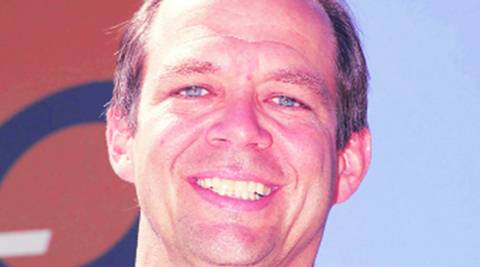It was after a seven-year gap that wind turbine maker Suzlon Energy posted annual profits the last fiscal, but all along the company continued to hone the associated technology despite the financial difficulties it faced. As the second largest wind manufacturer in FY 16, it is now poised to leverage its technical edge in the competitive market. Duncan Koerbel, chief technology officer at Suzlon, spoke to Sumit Jha on innovations that are changing the landscape of wind energy ecosystem. Excerpts:
Suzlon has launched quite a few products in the recent past with innovation being its claim to fame. Could you elaborate on what these products are and how they are going to enhance efficiency and utilisation?
Our new products such as the S97-120 and S111-120 meter hybrid towers, in addition to getting our latest rotor designs into winds with higher energy, also require one-third less concrete for their foundations and are easier to transport to the site. The S97-120 m, which has a hub height of 120 meter Hub Height and 97 meter Rotor diameter, is giving 35% plant load factor (PLF) in India, which is the highest PLF turbine in the country. The S111-120 m is forecast to provide 40-45% PLF.
You May Also Like To Watch This:
What are the company’s current R&D projects?
Our new Blade Science Centre in Vejle, Denmark, is working on the development of aerodynamics, pitch control systems, smart controls and new structures. Our research and development (R&D) efforts are focused on lowering the levelised cost of electricity (LcoE) by 20% in the next five years with new turbines. Additionally, more efficient turbines will make previously unviable sites viable. Furthermore, we envision gigawatt size projects supported by increasing digitisation and best-in-class service.
Will the wind turbines continue to grow taller in future in pursuit of better efficiency?
Yes, turbines will continue to grow taller in pursuit of better efficiency. Many regions were left untapped because their wind resources were not strong enough at the prevailing wind turbine heights for adequate generation. Hence, taller turbines are the solution. A wind turbine’s power output is primarily a function of the wind velocity.
How has the wind technology landscape changed in the country in the last two decades?
Wind technology has witnessed a sea change over the past two decades, with focus on improving the energy yield and bringing down the cost of energy. We have consistently improved the size, weight and aerodynamic performance of our rotor blades. Similarly, tower heights have continuously increased. Today we are installing turbines that have a capacity to generate 2.1 MW. Improvement in the operations, maintenance and services (OMS) of wind turbines through digitisation of checklists, work instructions and technical documents has resulted in faster execution of work and reducing of downtime.
The work being done globally on energy storage system has been hailed as a game changer for renewable energy. Is there something similar in the works that could change the landscape of the wind energy?
Aerodynamics is the key to maximising output from wind turbines and there is continuous work happening on advancement in aerodynamics and material technology. Improvements in computational fluid dynamics (CFD) analysis and the resulting optimisation of rotor configuration and pitch control directly translate into overall increase in production. Our new blade design will utilise carbon fibre in key areas of the blade to reduce the weight of the blade and allows us to design even more aggressive airfoils that generate more lift and less drag in the outboard portions of the blade.
Suzlon’s hybrid tower uses a lattice base and tubular tower which uses a unique transition piece to join the upper and lower section of the tower. These towers make new heights easier to scale, require less material and hence cost less. Wind farm management will grow to further enhance control of the complete park.

